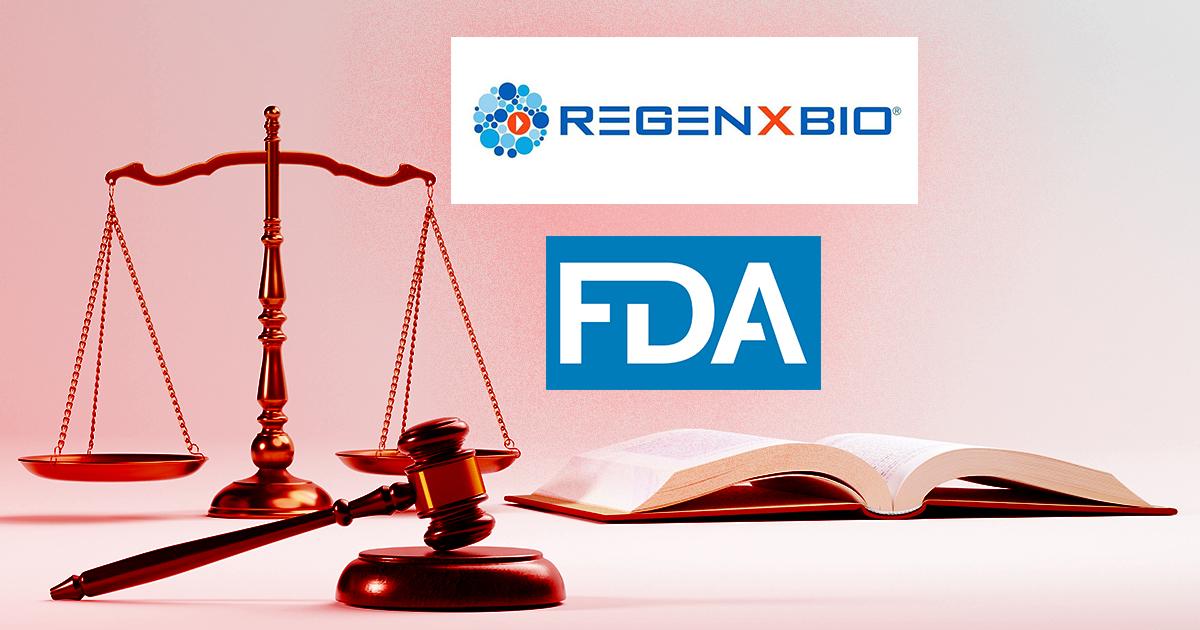RegenxBio sues FDA over clinical hold

Days after the U.S. Food and Drug Administration placed a partial hold on RGX-314, RegenxBio (NASDAQ: RGNX) lead gene therapy agent, the company initially outlined common responses (delaying an investigational new drug [IND], continued assessment and monitoring, etc.), but then did something completely unexpected — it sued the FDA, seeking to set the hold aside, adding the FDA was in violation of its own rules that state it must provide advance warning or explanation for the hold.
“By failing to provide advance notice of, or any reasoned basis for, the clinical hold, FDA violated the FDCA and its own regulations. FDA’s clinical hold on RGX-314 is therefore contrary to law and arbitrary and capricious under the Administrative Procedure Act,” the company said.
The FDA halted further enrollment in the Phase IIb trial of RGX-314 for wet age-related macular degeneration (AMD) and paused an IND application for diabetic retinopathy, the latter of which has now been withdrawn. RegenxBio responded by filing a lawsuit against the agency on Nov. 7. (The FDA’s action is considered a “partial hold” because it halts further enrollment, but allows currently enrolled patients to receive therapy.)
RegenxBio’s stock took a hit after announcement of the FDA’s partial hold, but came back briskly. RGNX closed at $37.64 Nov. 21 (52-week high: $65.62; 52-week low: $30.38).
RegenxBio has been a favorite among many analysts, and at least one, Hung Tran, MD, of Integrated BioSci Investing, sees its current situation as a buying opportunity. Writing at the Seeking Alpha website, Dr. Tran referred to RGX-314 as the “crown jewel” in the pipeline of treatments for retinal disease “because of its ability to capture a mega-blockbuster market” currently dominated by Eylea (aflibercept, Regeneron/Bayer).
“Looking ahead,” Dr. Tran wrote, “I strongly believe that the [FDA’s] partial hold will be removed soon. And, there [is a] 70% chance that RGX-314 will deliver robust data, gain FDA approval, and ultimately become a mega-blockbuster.”
Dr. Tran estimates that RGX-314 will generate at least $1 billion in sales, or about 25% of the $4 billion in annual sales for Eylea.
In a press release issued earlier this month, RegenxBio noted that the FDA’s hold was related to a third-party surgical device used to deliver RGX-314, and not to RGX-314 itself.
A RegenxBio media spokesman said the FDA’s letter “provides us with information about their concerns around the third-party commercially available devices that are used to deliver RGX-314 in our Phase I/IIa trial for the treatment of wet AMD,” the spokesman wrote in an email to OIS. “We will continue to work with FDA to address the concerns that they have raised regarding the devices.”
RegenxBio president Kenneth Mills said “We are conducting a review of readily available and substitutable alternatives for these devices, should they be needed. And we’re working with the FDA to further understand their concerns. As a result, we do expect the delay of the initiation of the Phase IIb study in wet AMD and the filing of the IND planned for the Phase II study of RGX-314 for the treatment of diabetic retinopathy until the first quarter of 2020.”
With the expiration of Eylea patents in 5 years, Dr. Tran believes that Regeneron may be motivated to buy out RegenxBio, which owns the “powerful NAV platform” for development of gene therapies utilizing adeno-associated virus (AAV) vectors.
“In the next few years,” Dr. Tran predicted, “RGX-314 will be approved with a broad label that includes in-office usage. And I believe that being a blockbuster is the final destination for this drug, as it’ll dominate the $10 billion retinopathy market. Better yet, the ultimate fate could be a complete acquisition by Regeneron to replace Eylea.”
RegenxBio continues to evaluate in-office delivery of RGX-314 to the suprachoroidal space using Clearside Biomedical’s SCS Microinjector and expects to announce clinical plans in 2020.
